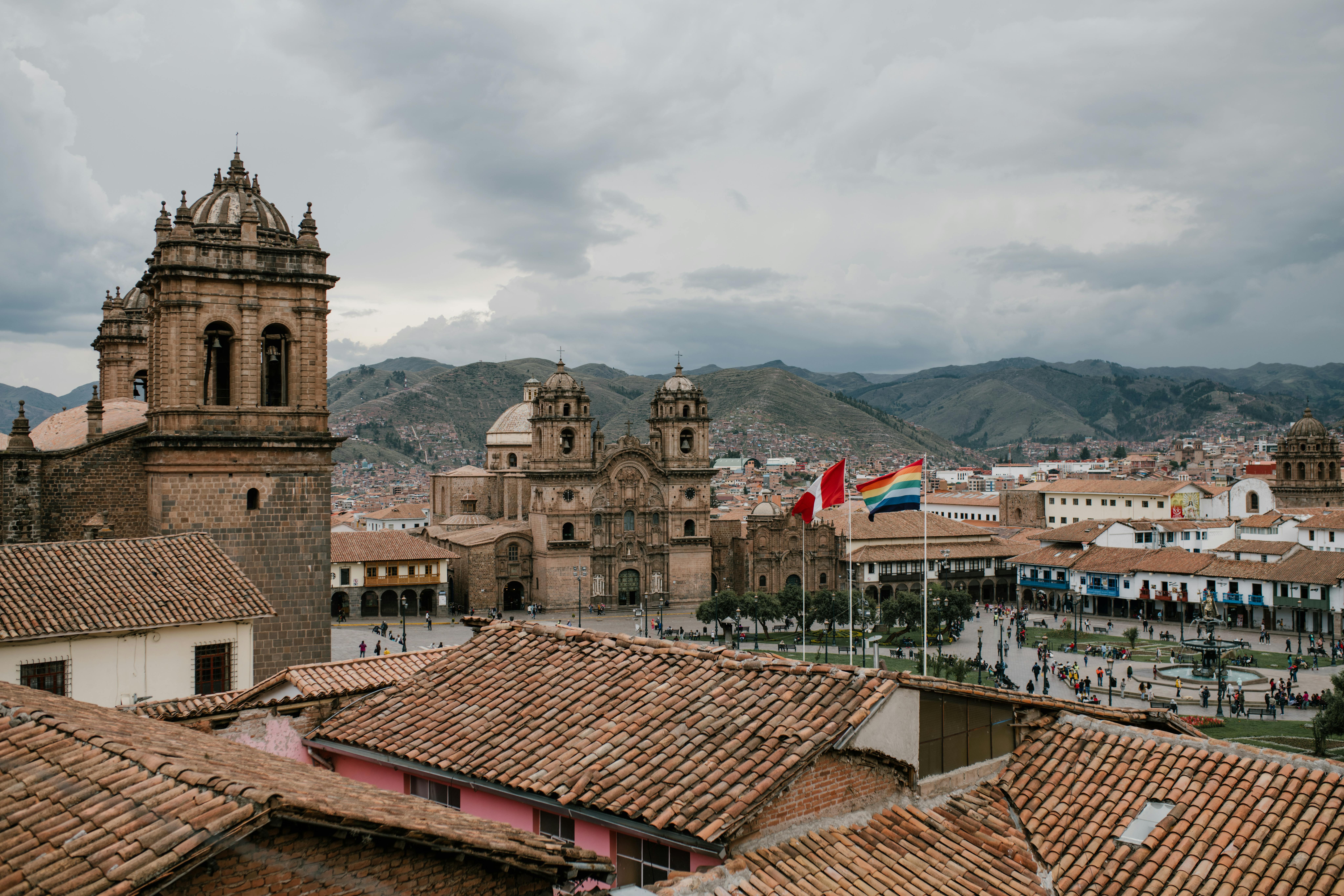In the film New Moon from the Twilight SagaBella arrives in Volterra, Italy, just in time to stop Edward from revealing himself as a vampire to a crowd of mortals at the St. Mark’s Day festival on March 19. Festival goers, dressed in red hooded robes, march in procession with a statue of Saint Mark to the church in the center of town. In it Twilight world, “St. Marcus” is celebrated by mortals for having rid the city of vampires, when he himself was, in fact, a vampire. Volterra is the home of the Volturri, the lawmakers of the vampire world. Marcus is one of them. Some Twilight fans wear red on March 19 to commemorate this holiday.
New Moon author Stephanie Meyer borrowed the fictional Saint Mark’s Day from the real European celebration of Saint Mark’s Day. She changed the date: Saint Mark’s Day is April 25. Because the date coincides with the celebrations of Easter (a moveable holiday; the date varies, but usually occurs in March or April) and a number of other Eurasian spring festivals, Saint Mark’s Day is believed to be a Christianized version of many older pagan observance. In the book Ostara, Edain McCoy writes: “As was done with many pagan festivals in Europe, the early church attempted to refocus the symbolism of Ostara [the spring festival for Germanic Pagans] on the Feast Day of San Marcos. Instead of being a festival of rebirth, the imagery of Saint Mark concentrated on death and martyrdom, through which Christian rebirth is achieved.”
Saint Mark is traditionally considered the author of the Gospel of Mark in the Christian Bible. He is believed to be the companion of Saint Paul, the great early Christian evangelist, who is referred to in the Book of Acts of the Apostles as “John Mark”. A disciple of Paul, Mark is believed to have used Paul’s preaching as the basis for the Gospel. He is also remembered as the founder of the Coptic Church. Coptic tradition holds that Mark appears in the Gospels as the young man who carried water to the house where the Last Supper of Jesus and his Apostles took place, as the young man who ran away naked when Jesus was arrested, and having spilled the water Jesus turned into wine at the wedding in Cana.
Mark is said to have been martyred on April 25, 68, in Alexandria, Egypt. A group of local people resented his attempt to turn them away from their traditional gods. They put a rope around his neck and dragged him through the streets to death. The main sanctuaries of him are in Egypt and Italy. The Italian shrine to him is the Basilica of San Marco in Venice, which is traditionally said to be the place where Mark’s remains are buried. So he really does have a connection to Italy, although not specifically to the city of Volterra.
Perhaps because of his martyrdom, many curious traditions arose over the centuries about the celebration of the feast of Saint Mark. In 17th to 19th century England, especially in the north and west, folklore held that the specters of those who would die the following year would procession, in the order in which they would die, through the churchyard and to the church. at midnight on Saint Patrick’s Day. Mark’s Eve. Some said that the procession would be of coffins, or of decapitated or rotting corpses. Others said that the procession would be of identifiable specters as ghosts, and that one could sit and watch the procession as it went by and thus know who was going to die.
To see these specters, folklore said, one had to be fasting. Another legend said that one had to be present at the cemetery on Saint Mark’s Eve for three years in a row, and only in the third year would one see the ghosts. Sometimes these living observers saw their own specters and died soon after. Another superstition regarding St. Mark’s Eve is that on this night, witches who had sold their souls to the devil (or written their names in the devil’s book) and wished to retain their supernatural powers had to walk three times around the church upside down, peek through the keyhole, and recite certain words, or his powers would be lost.
Another traditional activity on the eve of San Marcos was removing the ashes from the hearth. If the ashes formed the shape of a shoe, someone who lived in the house would die within the year.
Saint Mark’s Eve was one of the three nights of the year associated with the dead. The others are Midsummer Eve and All Hallows’ Eve. According to some legends, on these three nights those who have died can return to earth as spirits. This belief about All Hallows’ Eve (Halloween) is a Christian appropriation of the Celtic harvest festival of Samhain, the point at which the veil between the living and the dead was thinnest, and also the midpoint between the autumn and winter. Similarly, St. Mark’s Eve marks the midpoint between spring and summer and is associated with the pagan festival of Ostara. Midsummer Eve, traditionally celebrated on June 23, is associated with the pagan festival of the summer solstice.
However, not all legends associated with St. Mark’s Eve are associated with death. The night was also one where young women tried to guess who their future mates would be. There were several ways to accomplish this: picking twelve sage leaves at midnight, walking around a haystack nine times while reciting, “Here’s the pod, where’s the knife?” or baking a silly cake, eating a piece of the cake, and then walking backwards to the bed without saying a word (hence the word “silly”). If a woman did any of these things, but especially if she prayed to St. Mark while she did them, she would catch a glimpse of the man she would one day marry. However, if she went to bed without seeing that shadow and she dreamed of a freshly dug grave, it meant that she would die single.
However, these are largely English customs. In Italy, if Saint Mark’s Day is celebrated, it is with banquets, drinks and/or offerings of bread to the less fortunate. The custom of wearing red and making a procession seems to be an invention of Stephanie Meyer.


